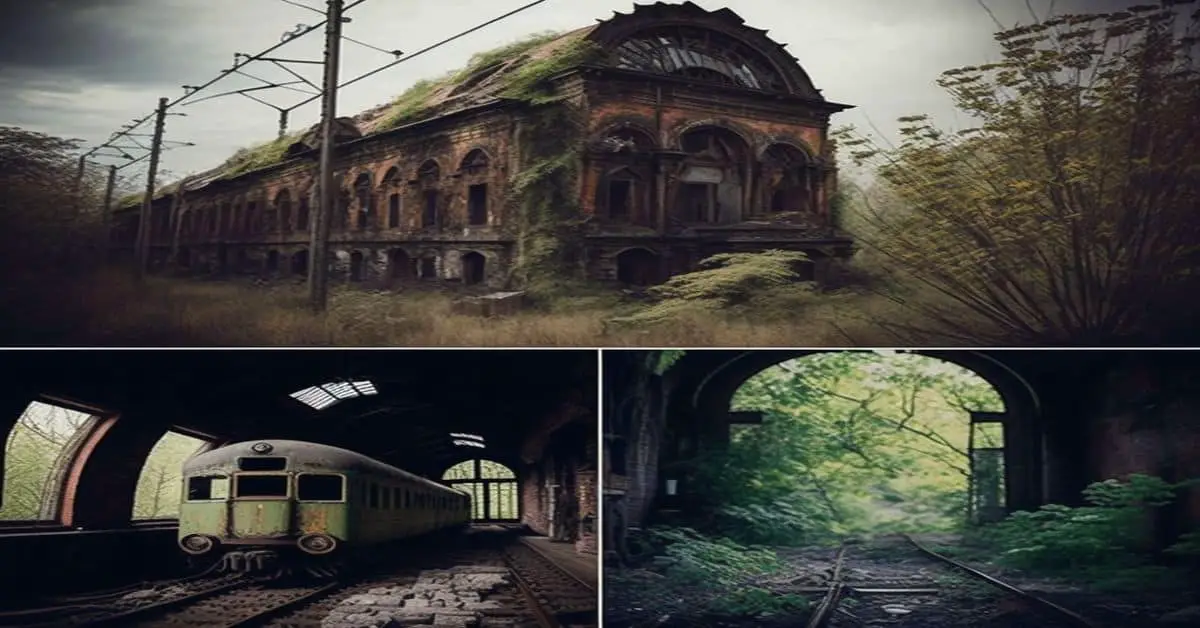Nestled within the rolling hills and winding rivers of Winona County, Minnesota, lies the forgotten ghost town of Whitewater Falls. Once a bustling community with over 100 residents in 1895, the town was eventually abandoned due to the harsh realities of early Minnesota’s history.
Today, the only remnants of Whitewater Falls can be found in the Whitewater Cemetery, which dates back to ca1890-1910. As one approaches the site, the air is heavy with a sense of solitude and abandonment. The rustling of leaves and birds chirping are the only sounds that break the eerie silence.
The cemetery is a solemn tribute to the lives that once thrived in this now-forgotten town, and serves as a poignant reminder of the trials and tribulations of early settlers in Minnesota. In this article, we will delve into the history of Whitewater Falls, explore the reasons for its abandonment, and examine the remains and legacy of this lost town.
Key Takeaways
- Whitewater Falls was a once-thriving ghost town in Winona County, Minnesota, with over 100 inhabitants in 1895.
- The town’s location in a flood-prone area and poor farming practices led to constant spring floods that destroyed crops, homes, and businesses, making it difficult for residents to make a living and attract new residents or businesses.
- The impact of floods on the community was the primary cause of the abandonment of Whitewater Falls.
- The legacy of Whitewater Falls serves as a reminder of the importance of sustainable agricultural practices and responsible land management, and the Whitewater Cemetery serves as a symbol of the past and the people who once lived there.
Location and History
Whitewater Falls, a ghost town in Winona County, Minnesota, was constantly ravaged by spring floods due to poor farming practices and erosion, leading to its likely desertion.
The town was situated in sections 27 and 34 of Whitewater Township and had over 100 inhabitants in 1895.
Despite its proximity to the Whitewater River, the town was not named after the river but rather after the falls nearby.
The town’s economy was mainly centered around agriculture, with crops such as wheat, corn, and oats being grown in the surrounding farmlands.
However, the town’s location in a flood-prone area proved to be its undoing.
The spring floods, which were caused by both natural and human factors, often destroyed the town’s infrastructure and crops, making it difficult for the residents to make a living.
As a result, the town was likely deserted over time.
The only remaining trace of the town is the Whitewater Cemetery, which dates back to ca1890-1910 and is located quite a ways north of the ghost town site.
Despite the town’s tragic end, its history serves as a reminder of the importance of sustainable agricultural practices and responsible land management.
Reasons for Abandonment
What factors led to the eventual abandonment of this former settlement, once home to over 100 residents in the late 19th century?
The primary cause of the abandonment of Whitewater Falls was the impact of floods on the community. Spring floods constantly ravaged the town due to poor farming practices and erosion. The floods would destroy crops, homes, and businesses, forcing residents to rebuild each time. However, eventually, the community resilience was worn down, and it became too difficult to continue.
Despite the challenges, the residents of Whitewater Falls attempted to maintain their town for as long as possible. However, the constant threat of floods made attracting new residents or businesses increasingly difficult. With time, the population dwindled, and many people moved elsewhere for better opportunities.
Eventually, the town was likely deserted due to the floods, and the once-thriving community became a ghost town.
Remains and Legacy
The remains of the former settlement in Winona County have left a legacy for future generations to reflect on the impact of environmental factors on human settlements.
The Whitewater Cemetery, located north of the ghost town site, is the only remaining evidence of the town’s existence. The graveyard, with its old-fashioned headstones and inscriptions, symbolizes the past and the people who once lived there.
Visitors to the cemetery can ponder the tragedies and triumphs of the town’s inhabitants, and the impact of the floods that ultimately drove people away.
Meanwhile, local legends about Whitewater Falls continue to circulate. Some say the town was cursed, while others speculate about buried treasure or ghostly apparitions haunting the area.
Such tales are a testament to the enduring fascination with abandoned places and the mysteries they hold. The legacy of Whitewater Falls may be a reminder of the dangers of environmental degradation, but it also inspires curiosity and imagination in those who explore its remains.
Frequently Asked Questions
What was the main industry of Whitewater Falls?
The main industry of Whitewater Falls, a ghost town in Winona County, Minnesota, is not specified in available sources. Despite this, the town’s historical significance is evident through the remaining Whitewater Cemetery and its former population of over 100 people in 1895.
Were there any notable residents or events in the town’s history?
No notable residents or significant events were recorded in the history of Whitewater Falls, the deserted ghost town in Winona County, Minnesota. Its only remaining artifact is the Whitewater Cemetery, established between ca1890-1910.
What efforts were made to prevent the spring floods that plagued the town?
Flood prevention measures were not implemented in Whitewater Falls, leading to constant spring floods. Dam construction was not considered, and poor farming practices and erosion exacerbated the problem, ultimately leading to the town’s abandonment.
How far away is the nearest current town or city from the site of Whitewater Falls?
In the midst of rugged wilderness, Whitewater Falls’s site is a considerable distance from civilization. Visitors may encounter local wildlife while journeying to the nearest town or city, which is approximately 20 miles away.
Are there any plans or proposals for preserving or commemorating the history of Whitewater Falls and its cemetery?
Possible preservation options for the Whitewater Cemetery, the only remaining evidence of Whitewater Falls, have not been publicly discussed. The impact on local tourism is unknown, as the town is not currently promoted as a tourist destination.


